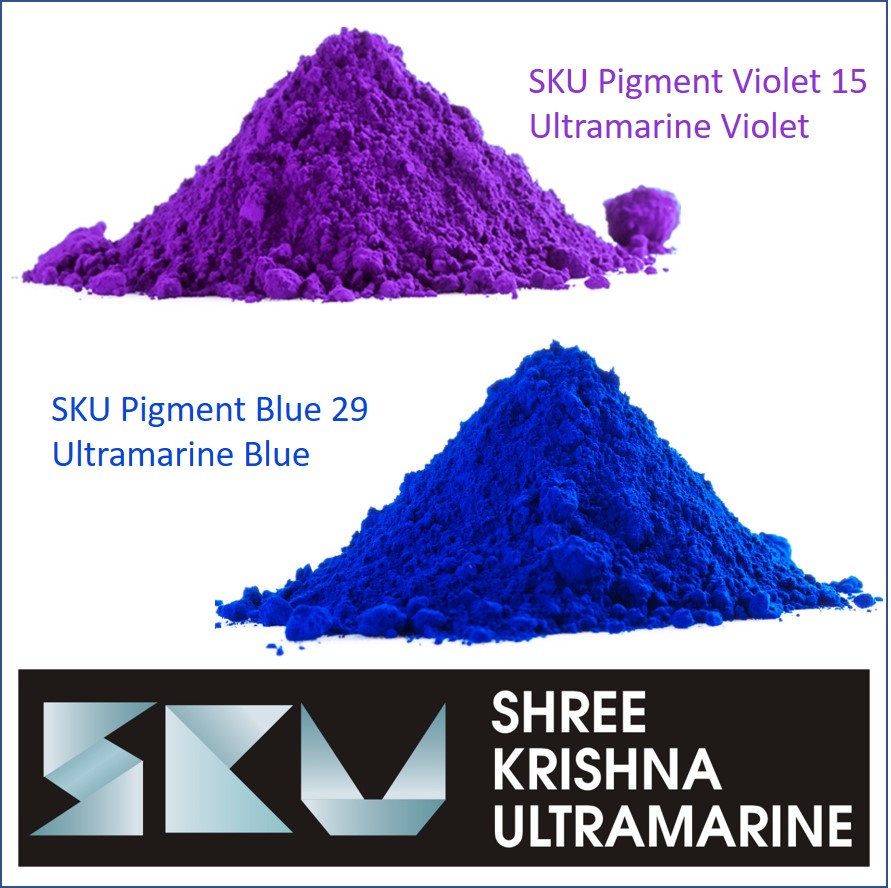Indicators on Ultramarine Blue You Should Know
Ultramarine Pigments: The Timeless Brilliance of Blue and Violet Shades

For thousands of years, color has influenced art, design, and industry. Among the most celebrated hues, Ultramarine remains unmatched for its timeless brilliance. Today, companies like SKU Pigments specialize in manufacturing high-quality Ultramarine pigments, including Ultramarine Blue, Ultramarine Violet, Pigment Blue 29, and Pigment Violet. From industrial coatings and packaging, Ultramarine has become the backbone of modern blue pigments.
Tracing Ultramarine from Lapis Lazuli to Industry
The name Ultramarine comes from the Latin “ultra mare,” meaning “beyond the sea,” a reference to lapis lazuli originally imported from Afghanistan. For centuries, it was the most expensive pigment, used by Renaissance masters to depict divine subjects. It symbolized wealth and divinity.
Modern chemistry made it possible to produce artificially Ultramarine pigments, bringing the once-exclusive shade into everyday use. This breakthrough turned a exclusive pigment into a cost-effective solution for countless sectors.
Why Ultramarine Blue Leads the Industry
Ultramarine Blue pigments—the synthetic form of Pigment Blue 29—are the most widely used. Known for their lasting vibrancy, they are sustainable and reliable. They are used in:
• Paints and coatings for rich tones.
• Plastics and rubber, thanks to chemical safety.
• Publishing and packaging, where clarity is vital.
• Beauty products, given their skin-safe quality.
This balance of economy and brilliance keeps Ultramarine Blue among the global color leaders.
The Elegant Appeal of Violet Shades
Ultramarine Violet offers softer tones that appeal in cosmetics. Pigment Violet derived from Ultramarine is stable, making it ideal for eco-friendly materials.
Its sophisticated tone enhances fine art, while ensuring stability without chemical breakdown.
Pigment Blue in Modern Industries
Pigment Blue—particularly Ultramarine Blue pigments—remains a core pigment. It offers eco-friendly performance for:
• Automotive paints with brilliant sheen.
• Consumer goods, ensuring consistent identity.
• Tiles, flooring, cement, adding functionality and design.
This wide applicability ensures Pigment Blue’s dominance.
Why Industries Prefer Ultramarine
• Non-Toxic & Safe: Certified safe for consumer goods.
• Heat & Light Resistant: Colors don’t fade under UV.
• Eco-Friendly: Green production methods.
• Cost-Effective: Economical mass use.
• Versatile: Applicable everywhere color matters.
Where Ultramarine Pigments Shine
1. Paints & Coatings: Durable architectural shades.
2. Plastics & Rubber: Resistant to heat.
3. Cosmetics: Eyeshadow and nail polish.
4. Construction: Flooring products.
5. Printing & Inks: Precision printing.
SKU Pigments: Global Ultramarine Experts
SKU Pigments leads the market, offering innovation in Ultramarine pigments. Their product portfolio includes:
• Pigment Blue 29 for industrial-scale use.
• Ultramarine Violet and Pigment Violet for luxury tones.
• Custom shades for specialized markets.
Their reputation is built on consistent quality and Ultramarine Violet eco-friendly production.
Conclusion
From lapis lazuli origins to the backbone of blue pigments, Ultramarine has remained relevant for centuries. Whether it’s the timeless vibrancy of Ultramarine Blue, the subtle elegance of Ultramarine Violet, or the stability of Pigment Blue 29, Ultramarine pigments remain indispensable.
With SKU Pigments as a global supplier, industries secure reliable pigment supply. As demand for eco-friendly pigments rises, Ultramarine will stay ahead in global markets.
Common Queries About Ultramarine
1. What is Ultramarine?
One of the world’s most trusted synthetic pigments.
2. What is Pigment Blue 29?
A widely used industrial pigment.
3. Where is Ultramarine Violet used?
In fine arts and specialty industries.
4. Are Ultramarine pigments safe?
Yes, non-toxic and eco-friendly.
5. Why choose SKU Pigments?
Leaders in Ultramarine innovation.